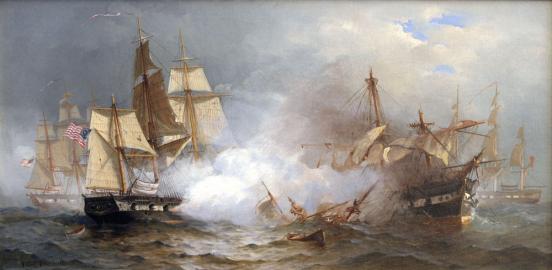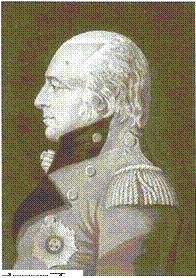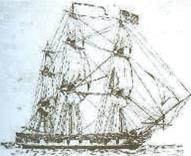WASHINGTON SOCIETY
WASHINGTON STATE SOCIETY REPORT 2016-2017
And Spokane House Chapter Report
By Linda R Lind PR Chairman
And Judith A. Emry Spokane House Chapter PR Chair
The Lewis and Clark and Puget Sound Chapters gave JROTC Awards to four cadets.
The Puget Sound Chapter participated in a George Washington Memorial Event and in Veteran’s Day activities
The Spokand House Chapter recognized Judith A. Emry by awarding her a Spirit Award for locating the
graves of Real Daughters who are buried in western states: 132 in Washington, 116 in Oregon, 41 in Idaho,
9 in Montana, 48 in California, 4 in Arizona, 88 in Utah, and 6 in Wyoming.
.
The Puget Sound Chapter donated books to the Tacoma, Washington library.
- The Delaware Militia in the War of 1812 by Henry C. Peden
- British Aliens in the U.S. During the War of 1812 by Kenneth Scott
- War of 1812 Virginia Bounty Land and Pension Applicants by Patrick G. Wendell
- Ohio’s Regulars in the War of 1812 by Eugene Johnson
The Spokane House Chapter presented programs on:
The Women of 1812 and the 1812 Naval War
For complete copies of Report submitted for 2017-2018 Click Here pr Washington State0001.pdf
SCRAPBOOK PHOTOS
Photos of JROTC Awards
Photos of George Washington Day and Memorial Day Celebrations

Frigate UNITED STATES Conquers H.M.S. MACEDONIAN
Oil on Canvas |
Circa 1880 |
12 x 24 Inches |
19 x 30¾ Inches Framed |
Signed LL: Fred Pansing |
AA most professional and artistically pleasing interpretation of an important naval battle of the War of 1812, Pansing nailed the historic facts of the U.S.S. frigate UNITED STATES’ complete defeat of his royal majesty’s ship MACEDONIAN in the heart of the Atlantic Ocean.
Slightly more than two months after the U.S.S. CONSTITUTION won the first naval engagement of the war, on Oct. 25, 1812 the frigate UNITED STATES of 44-guns fell in with H.M.S. MACEDONIAN of 38-guns. The British captain bore down on the colonial upstart whose captain, Stephen Decatur, commanded her 24-pounders to fire. Their marksmanship proved superior, and the American would strike and bear-away slightly, and reloaded, strike again. In a two-hour engagement, MACEDONIAN’s mizzen mast was shot down and both the main- and fore- masts were topped off, as Pansing has painted. It is recorded that more than 100 rounds hit the Brits ‘between wind and wave’. Suffering great losses to her working guns and crew, the British warship surrendered.
Pansing has put another historic reference in his painting, with the two-position views of the combatants on their respective approaches as the illusionary backdrop to the battle, as to possibly allude to the unavoidable nature of the conflict. The bright, stark reality of fight is hauntingly beautiful, with the smoke of the conflict failing to obscure the outcome. The two ships would take five-weeks to sail to New York, where MACEDONIAN would be purchased by the American government and become an fighting navy asset.
Actual painting is located in the Vallejo Maritime Gallery at Newport Beach, CA
1880 painting is not copyrighted. Shared by Washington Society.
FROM US ARMY CAPTAIN TO SPY
Article by Whitling, Spokane House Chapter Publised in U.S. D. Newsletter August, 2017
John Henry sat at his desk at his northern Vermont farm, and wrote..His letters to newspapers bore unmistakable pro-British sentiment. He was born circa 1770's at Dublin, Ireland, and had immigrated to New York where he sought out an aging, wealthy uncle.
Described as "very handsome," in 1798 Henry had obtained a captains commission in the U.S. Army, and married the daughter of a prominent Philadelphia family.
 In 1801, he resigned his commission, and moved to a farm in Vermont. Here he studied law for five years, and wrote letters criticizing the Federal government.
In 1801, he resigned his commission, and moved to a farm in Vermont. Here he studied law for five years, and wrote letters criticizing the Federal government.
The pro-British tenor of Henry's letters were attractive to the ears of Sir James Craig, the Governor General of Canada. He had little trouble in securing Captain Henry, turned British spy, to work for him.
Henry was sent to Boston, where for three months in 1809 he mingled with the affluent to secretly gain information determining the strength of British loyalties. He continued in regular correspondence with Craig, and was given the code name "A.B."
Henry reported to Craig that, "a war might produce a sudden separation of any section of this country from the common head."
In return for information, Henry traveled to Canada to lobby for a government position. Craig denied him any compensation. In 1811 Henry sailed to London, again to demand compensation for his secret service, but fared no better in England.
On his return voyage to America on the New Galen, he became acquainted with another passenger, the Comte Emile Edouard de Crillon.
Failing to secure a British government position, which he felt was owed him, the disgruntled Henry poured out his story to the trusting count. Crillon listened with growing interest.
Henry sought revenge towards the British government, and was also badly in need of funds. A plan was formed by which both Henry and Crillon could benefit financially. Henry was carrying the very letters between British officials which would expose prominent secret pro-British men ip America. The count would offer to sell them to the United States government.
Count Crillon arrived in Washington City, where he immediately charmed the society of the cify, and especially the French ambassador. He soon requested, and was granted, an audience with President
Madison. Crillon informed him that he could produce documents evidencing the disloyalty of many His Excelle ncy Sir Ja mes He nry Craig, American Federalists. The intrigued president was more than interested. After Crillon left his office, Cap tain-Gene ral
President Madison conferred with both Thomas Jefferson and James Monroe concerning the alleged documents.
The U.S. government would pay the enormous sum of fifty-thous.and dollars for the papers. The deal was also to include safe passage to France for Henry and his family.
With the agreement accepted, John Henry arrived in Washington City to transact the exchange of the forty handwritten pages he had written containing the information, and the payment. Before handing over the documents, he extracted the promise from Monroe that they remain sealed until he had left the country.
Monroe secreted the papers until he was assured that the Henry family was safely aboard the US.S. Wasp sailing for France on March 9, 1812. President Madison then released the documents to congress, where they were read by a congressional clerk. A few congressmen were visibly nervous.
They needn't have been. Henry' s forty pages did not contain the name of a single contact.
It is unknown what amount Crillon garnered from this deal. He left the U.S. on April 1, 1812, sailing for Paris.
Soon after his departure, a letter arrived for the president from the American minister to Paris, Joel Barlow. His letter was to inform that one Paul Emile Soubiran, a desperate con-artist, had impersonated the count.
Henry remained in Paris, where it is believed he died in 1853.
The forty Henry papers, although containing no names, succeeded in accomplishing support for the president's declaration of war, and a strong American Patriotism.
REFERENCES
Count Eduard de Crillon. Henry Adams. TheAmericanHistoricalReview,Vol. 1, No. 1. 1895. P. 51-69.
 Elbridge, Gerry to James Madison, January 2-3, 1812. American State Papers, Foreign Affairs, Vol. 3, p. 556. James Monroe to Count de Crillon, February 2, 1812. John Henry to James Monroe, February 13, 1812.
Elbridge, Gerry to James Madison, January 2-3, 1812. American State Papers, Foreign Affairs, Vol. 3, p. 556. James Monroe to Count de Crillon, February 2, 1812. John Henry to James Monroe, February 13, 1812.
James Madison to Thomas Jefferson, March 9, 1812.
Judge Peters (Philadelphia) to Timothy Picker ing, March 18, 1812.
Joel Barlow to James Monroe, April 14, 1812
James Madison to Congress, June 1, 1812.
Portrait of Sir James Criag, Library and Archives Canada, Wikipedia Commons Drawing, U.S.S. Wasp, in the public domain
August 2017 August 2017
History of Our Era


 In 1801, he resigned his commission, and moved to a farm in Vermont. Here he studied law for five years, and wrote letters criticizing the Federal government.
In 1801, he resigned his commission, and moved to a farm in Vermont. Here he studied law for five years, and wrote letters criticizing the Federal government. Elbridge, Gerry to James Madison, January 2-3, 1812. American State Papers, Foreign Affairs, Vol. 3, p. 556. James Monroe to Count de Crillon, February 2, 1812. John Henry to James Monroe, February 13, 1812.
Elbridge, Gerry to James Madison, January 2-3, 1812. American State Papers, Foreign Affairs, Vol. 3, p. 556. James Monroe to Count de Crillon, February 2, 1812. John Henry to James Monroe, February 13, 1812.